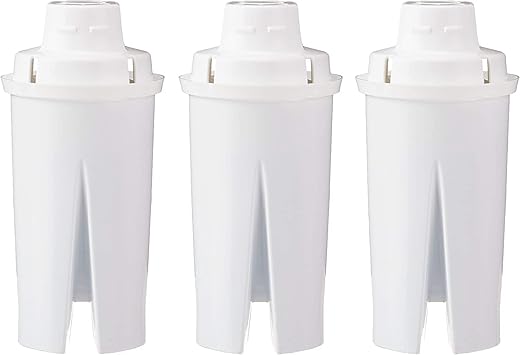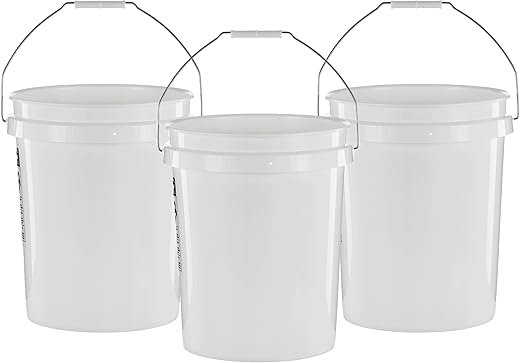This step-by-step guide outlines the process for replacing filters in your Gravity Water Filter System, an efficient method for purifying drinking water without electricity. It emphasizes the importance of regular filter maintenance to ensure optimal performance and safe drinking water. The guide includes detailed instructions on how to remove old filters, clean the system components, and install new filters properly, making it easy for users to maintain their water filtration system effectively. By following these steps, you can enhance the longevity of your filter system and ensure access to clean, safe drinking water.
Step-by-Step Guide to Replacing Filters in ProOne Gravity Water Filtration Systems
Gather Necessary Supplies
Gather all necessary supplies before starting the filter replacement process. Collect new filters that are compatible with your system and set them aside. Clean a cloth nearby for wiping down any spills or debris, and place a bucket on the floor to catch any excess water that may escape during the replacement. Ensure everything is within arm’s reach so you can work efficiently and avoid interruptions.
Turn Off the Water Supply
Ensure the water supply to your gravity water filter system is completely turned off. Locate the shut-off valve, which is typically found near the water source or the filter system itself, and turn it clockwise until it stops. Verify that the water supply is off by checking the filter system for any leaks or water flow. This precaution helps us avoid any spills or leaks during the filter replacement process, ensuring a clean and efficient operation.
Remove the Upper Chamber
Carefully grasp the upper chamber of the gravity filter system and check for any screws or latches securing it to the lower chamber. If your model has screws, use a screwdriver to unscrew them completely. For models without screws, gently lift the upper chamber straight up, ensuring that no debris is caught between the chambers. Keep a firm grip to prevent it from slipping or tilting during the detachment process.
Take Out the Old Filters
Remove the old filters by gripping them firmly and pulling straight out of their housing. If your system has twist-lock filters, turn them counterclockwise to release before pulling. Ensure you are gentle to avoid damaging any surrounding components. Check for any debris or buildup in the housing before proceeding to install the new filters.
Clean the Filter Housing
- Use a clean cloth to wipe down the filter housing thoroughly.
- Focus on areas where old filters were installed, as these spots often accumulate dust and debris.
- Remove any visible build-up or contaminants to ensure a proper seal for the new filters.
- Pay attention to corners and crevices for a comprehensive clean.
- Dispose of the used cloth appropriately after cleaning to avoid reintroducing contaminants.
Insert New Filters
- Align the new filters with the designated slots in the filter housing.
- Firmly press the filters into place, ensuring they fit snugly without gaps.
- Check the alignment with the manufacturer’s guidelines, making sure the filters are oriented correctly.
- Gently tug on the filters to confirm they are securely seated and will not dislodge during operation.
Reattach the Upper Chamber
- Align the upper chamber with the lower chamber, ensuring that the filter outlets are properly positioned.
- Gently press the upper chamber down onto the lower chamber until you hear a click, indicating a secure fit.
- Check the alignment of the chambers to confirm they are tightly connected and not misaligned.
- Inspect the seal around the chambers to ensure there are no gaps that could lead to leaks when the system is in use.
Turn On Water Supply and Test
Turn the water supply back on by locating the main valve and slowly rotating it counterclockwise until it is fully open. Allow the system to fill completely; this may take a few moments, so be patient as water flows through the pipes. Test the new filters by dispensing water from the tap, ensuring you do so for at least a minute to clear any air pockets. Observe the area around the filters for any signs of leaks while the water is running, and ensure that the water dispensed is clear and free from sediment or discoloration.
Final Tips for Filter Replacement
In conclusion, maintaining our gravity water filter system by regularly replacing the filters is essential for ensuring the purity and taste of our drinking water. By following the outlined steps, we can easily perform this task and keep our system functioning optimally. Regular filter changes not only enhance water quality but also prolong the lifespan of our filtration system. Let’s commit to this simple practice for the health and well-being of ourselves and our families.
Essential Supplies Needed
Essential Maintenance Insights
Step-by-Step Guide to Efficiently Utilize Your Gravity Water Filter System
- Setup the System: Start by placing the upper chamber of the gravity water filter on a stable surface. Ensure that it is positioned above the lower chamber, allowing gravity to facilitate the flow of water
- Fill the Upper Chamber: Pour untreated water into the upper chamber of the filter. Make sure not to overfill it; leave some space to prevent spillage when the water starts filtering
- Wait for Filtration: Allow the water to pass through the filter elements into the lower chamber. This process can take some time, so be patient and avoid rushing it
- Collect Purified Water: Once the water has filtered through, you can access the purified water from the lower chamber. Use the spigot or pour it directly into your containers as needed
- Regular Maintenance: We should routinely clean and maintain the filter components according to the manufacturer’s instructions. This helps ensure optimal performance and prolongs the lifespan of the system
- By following these steps, we can effectively use gravity water filter systems to obtain clean and safe drinking water!
Everything You Need to Know About Gravity Water Filters
A gravity water filter system primarily consists of several key components that work together to provide clean drinking water. Here are the main components:
- Upper Chamber: This is where unfiltered water is initially placed. It typically includes a lid to prevent contamination and may have an inlet for easy filling.
- Filter Element: The heart of the system, this component is often made of activated carbon, ceramic, or other filtration materials that remove contaminants from the water as it passes through.
- Lower Chamber: After the water has been filtered, it collects in the lower chamber, which is where the clean water is stored and dispensed.
- Spigot or Tap: This is usually located at the bottom of the lower chamber, allowing us to easily access the filtered water.
- Stand or Base: Some systems come with a stand to elevate the filter, making it easier to fill and dispense water.
- Pre-filter or Sediment Filter: In some systems, there may be an additional pre-filter to remove larger particles before the water reaches the main filter.
By understanding these components, we can appreciate how gravity water filter systems utilize the natural force of gravity to clean water efficiently and effectively.
When considering how portable gravity water filter systems are for travel or camping, we find that these systems can vary in size and weight, but many are designed with portability in mind. Typically, they consist of a water reservoir, a filter element, and a collection bag or container.
Most gravity water filters are relatively lightweight, often weighing between 1 to 3 pounds, which makes them manageable for backpacking or camping trips. Additionally, many models are compact and can easily fit into a backpack without taking up too much space.
It’s important to note that setup is generally straightforward; they require minimal assembly and can be operational in a short amount of time. However, we should also consider that some larger gravity filters, especially those designed for groups or extended use, may be bulkier and less convenient for solo travelers.
In conclusion, while the portability of gravity water filter systems can depend on the specific model, many are designed to be lightweight and compact, making them suitable options for travel and camping.











Pro tip: When you’re cleaning the filter housing, try using a mixture of vinegar and water. It really cuts through any gunk and keeps everything sparkling clean! 😊
Glad to hear it worked well for you! Keeping those filters fresh really makes a huge difference in taste. If you have any other questions or need tips on maintenance, feel free to ask!
Success story here! I replaced filters in my Propur water filter system and noticed a huge reduction in sediment and taste. I feel so much better about the water my kids are drinking now!
Awesome to hear! It’s so important to provide clean water for our families. If you have any tips on your process, others would love to hear them too!
Can anyone recommend specific filters for the Katadyn Gravity Filter? I’ve heard mixed reviews about the standard ones.
The Katadyn Carbon Filter is a solid choice! It enhances the taste while also removing contaminants. Definitely check it out!
I just followed this guide to replace the filters in my Brita Gravity Water Filter, and wow, what a difference! The water tastes so much fresher now. I was worried it’d be complicated, but it was super easy. Thanks for breaking down the steps so clearly!
This guide is super helpful! I have a family of four, and we use the AquaTru system. I have to replace the filters more frequently than expected. Anyone else experiencing that?
That’s great to hear! With a family of four, it’s normal to go through filters more quickly, especially if you’re drinking a lot of water. Just keep an eye on the filter life indicators and you should be good!
Maybe consider adding a section on troubleshooting common issues with gravity filters? Sometimes my water flow slows down, and I’m not sure why!
Great suggestion! We’ll definitely look into adding troubleshooting tips for common issues like slow water flow in future updates. Thanks for the feedback!
Does anyone have advanced tips for maintaining a Berkey water filter? I want to make sure I’m doing everything right, especially with cleaning!
For Berkey filters, make sure to scrub the outside of the filters with a soft sponge and some soapy water every few months. It helps keep them functioning at their best! Let us know how it goes!